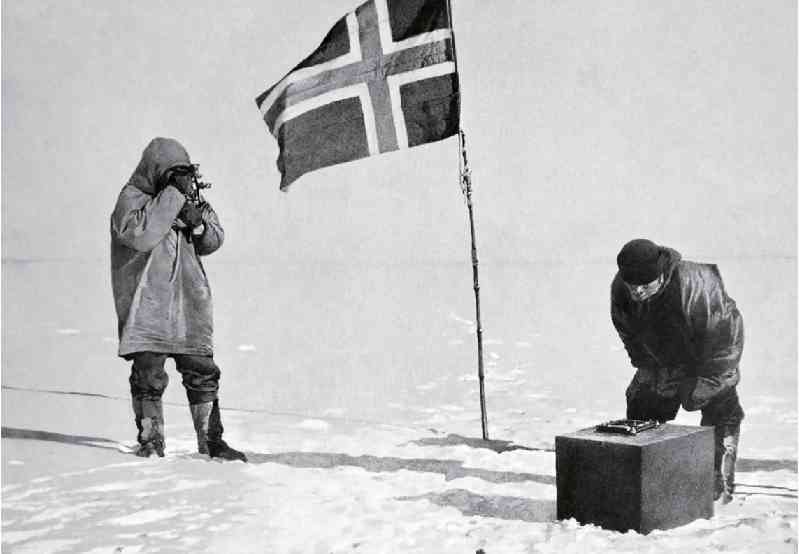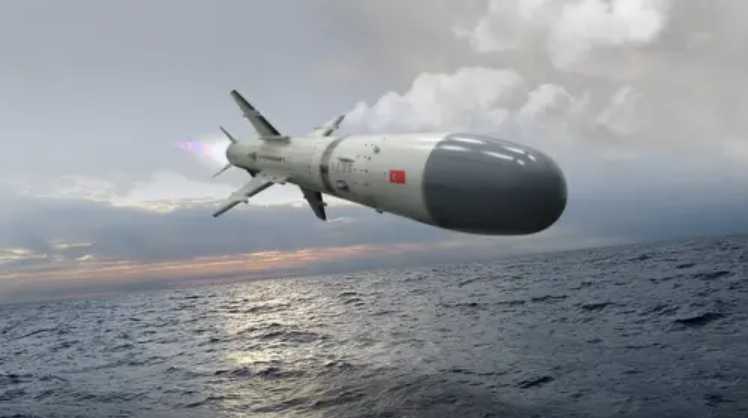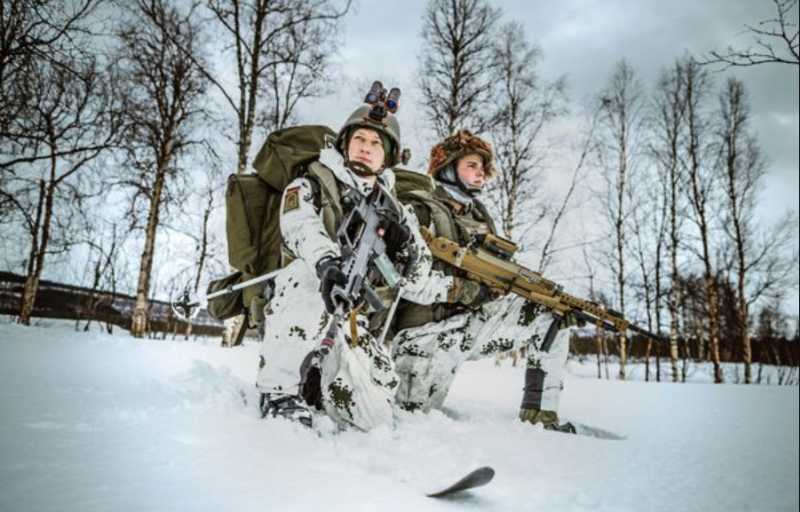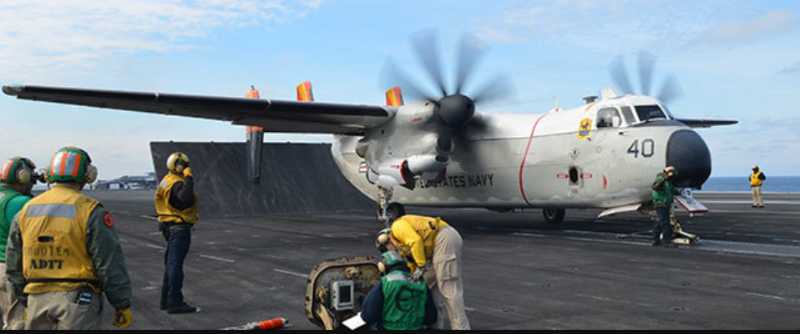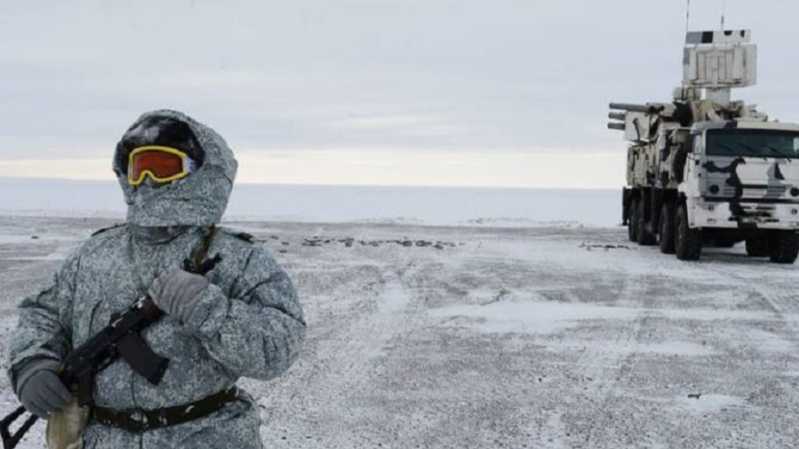The temptation of "the bottom of the world"
To this day, Antarctica is still the only continent on Earth that has no permanent human habitation. On modern globes, this white continent, which is almost entirely within the Antarctic Circle, has a fitting name - "the bottom of the world". This land, which is larger than the entire European area, is surrounded by the Pacific, Atlantic and Indian Oceans. Huge icebergs and turbulent waves prevent humans from easily approaching it. Interestingly, as early as the 6th century BC, the ancients had imagined its existence. For the Greeks living in that era, the Mediterranean basin was The earth was the center of the civilized world and had exchanges with the East, but only philosophers cared about the rest of the world. They believed that the world should be a sphere, and there should be a large land in the south to balance the land under their feet in the north, otherwise the earth would flip because of top-heavy. In the 2nd century AD, Ptolemy, the most famous ancient geographer living in Alexandria, drew a vast map of the southern hemisphere continent and called this continent "TerraIncognita", which means "unknown land"
Starting from The Age of Exploration in the 15th century marked the beginning of mankind’s "great geographical discoveries". In the 1770s, the famous British Captain Cook completed his expedition to the South Pacific. Although this trip did not reveal the secrets of the unknown southern continent, it still sailed into the Antarctic Circle at four different locations far apart. Captain Cook was the first navigator to do so. He sailed 480 kilometers within the Antarctic Circle and reached about 70° south latitude (actually only 250 kilometers away from the nearest Antarctic continent). After that, he encountered a thick ice belt and was forced to return. He wrote in his diary in frustration: "It is not easy to explore the unknown coast of the ice sea, and it is also quite dangerous... I am sure that there is a continent in the south, but it cannot be discovered. ”
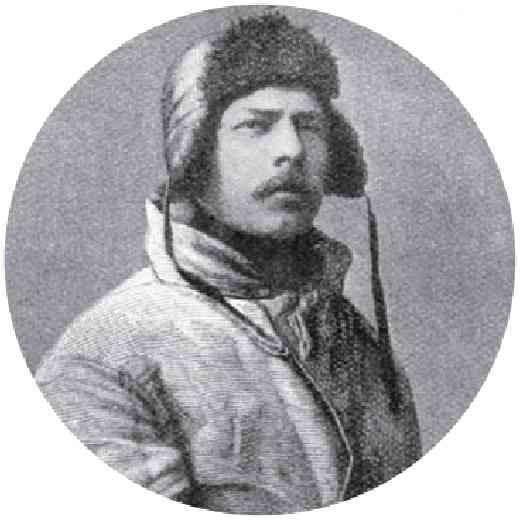
Captain Cook’s expedition also had an unexpected gain. He found extremely rich seal resources near South Georgia Island. When he returned victoriously and reported the news, it greatly stimulated the development and utilization of this resource by humans. During the peak period of capture, more than 100 ships from the United States, Britain and other countries flocked to Antarctic waters in one season to extract oil from the thick fat layer of these animals. Many ships sailed to waters further south than Captain Cook when they sailed south in search of prey. Around 1820-1821, Russian, American and British navigators successively claimed that they were the first to see the land of Antarctica. Regardless of who was the first to discover Antarctica, history has treated everyone who has made contributions to the search for Antarctica fairly. On today’s map of Antarctica, you can find the Bellingshausen (Russian) Sea, Prince Edward (British) Island, Palmer ( American) Scientific Station… 200 years ago, the outlines of the southern continent on the map and Antarctica on the earth finally overlapped. On January 23, 1895, Norwegian whaler, who was just an ordinary expedition member at the time, Bok Grewink, on behalf of all mankind, was the first to set foot on the land of "the bottom of the world" in Victoria Land, marking the end of the last page of the history of the discovery of the Antarctic continent and opening a new page - that is, conquering the South Pole.
It was in this year that the Sixth International Geographical Conference was held in London, and a resolution was passed calling on the world to march to the South Pole. With the advent of the 20th century, the pace of mankind’s march to the South Pole has greatly accelerated. In January 1909, Irishman Ernest Shackleton and his expedition team were only one step away from winning the glory of victory. They dragged a sled for an astonishing 200 kilometers in 12 days on a plateau at an altitude of 3,000 meters, crossed the 88° South latitude line, but failed. Only 179 kilometers away from the South Pole (88°23’ South Latitude), Shackleton’s expedition team was fed up with food shortages and had to turn around and retreat northward-as Shackleton himself admitted, if they continued to move forward, they could reach the South Pole, but then they would starve to death on the way back due to lack of food. Even so, this return journey almost turned into a nightmare: Shackleton and others could only rely on half-cooked horse meat, corn taken from feed, and a small amount of beef jerky for food. Hunger gave full play to their imagination: one of the most popular imaginary recipes was to cook meat and a lot of onions and mash them into a meat sauce, then wrap it with the fattest meat slices one spoonful at a time and place it on a thick large cake. Then cut the cake into many small pieces and fry them in more oil until they are browned. No one has recorded whether these imaginary dishes have ever been cooked. But it shows that the people who can imagine these dishes are struggling to survive on a diet that is not only lacking in fat and starch, but also lacking in protein and vitamins. The worst thing is that due to eating spoiled horse meat, all four members of the expedition team began to have diarrhea. Of course, there are no toilets in Antarctica, so they had to find a place to shelter from the wind. After the diarrhea, they had to pull up their pants quickly, but no matter how fast they were, their buttocks were numb by the cold wind. On February 23, the expedition team finally arrived at the supply station set up in advance and saved themselves from the brink of death. After the unsuccessful South Pole expedition, the appearance of the expedition members changed a lot, and only one person could still be recognized-just because he was the shortest in the team.
A tacit competition
Frustrated, Shackleton summed up his failure and found that there were two mistakes in this expedition - first of all, of course, he underestimated the difficulties during the expedition and planned the food too precisely. Another reason was due to the misuse of Siberian ponies, which proved to be inferior to sled dogs. Dogs only sweat through their tongues and can sleep peacefully in a blizzard at minus 40 degrees Celsius. Horses cannot adapt to the extreme cold of Antarctica. They sweat through their skin, so a layer of ice will form on their hair. As a result, they all fell down halfway and had to be replaced by people. If they had not dragged the sled themselves, they might have reached the South Pole long ago - Shackleton’s view was finally proved to be the only way to win the South Pole race, but some competitors at the time did not think so.
He is Shackleton’s British compatriot, Robert Scott, a colonel in the Royal Navy. As early as 1901, under the careful organization of the Royal Geographical Society, three expedition teams from Britain, Germany and Sweden went to Antarctica almost at the same time to divide the work and conduct field surveys on the Antarctic continent. As the leader of the British expedition team, Scott, who was 33 years old at the time, once reached 77° south latitude. Before this expedition, Scott was neither a scientist nor an explorer, but a torpedo expert. But human destiny is so unpredictable, and he eventually went down in history as a scientific expedition worker.
On June 1, 1910, Scott, the leader of the expedition, left Britain on the expedition ship "New Land" with 6 officers, 12 scientists, and 14 logistics personnel, and began a long voyage to the Antarctic. Scott had been preparing for this expedition for 6 years, and there was only one thing that still made him hesitate-horse or dog.

Shackleton wrote his experience and lessons into a book "The Heart of Antarctica", which Scott used to formulate his Antarctic expedition plan (he often mentioned this book in his diary). But he stubbornly didn’t like to use dogs to pull sleds. In his eyes, it was too cruel to tire the dogs to death or kill them to feed other dogs during the expedition. "It is not possible to consider murdering animals with such wisdom and personality, which are considered friends and partners." Another mathematical calculation also made him hesitate: a Siberian pony weighs 800 kilograms and eats 5 kilograms of food a day; while a sled dog weighs only 50 kilograms and needs 0.75 kilograms of food a day. As a result, he brought both ponies and sled dogs on his ship.
On January 4, 1911, the "Novaya" arrived at Ross Island. Scott’s base camp was to be established here. In Antarctica, the relatively good summer does not start until October every year. For more than half a year, Scott was preparing for his South Pole expedition and went to 79°29 south latitude to store more than a ton of supplies.

When he returned to the base camp (February 22), he heard really bad news. When the "Novaya" was sailing to Edward VII Peninsula, it met the expedition team of Norwegian Roald Amundsen in Walvis Bay of the peninsula. They planned to advance to the South Pole when the Antarctic summer arrived this year! The sudden appearance of the competitor shocked the British. What’s worse is that the distance from Walvis Bay to the South Pole is one degree closer than the distance from Ross Island to the South Pole of the British. In other words, if the Norwegian was competing with Scott to march to the South Pole, he would be more than 100 kilometers closer to the finish line than Scott. Scott could only try his best to suppress his frustration. He wrote in his diary, "I heard the unfortunate news from Walvis Bay... I should pretend that I didn’t know anything about it... I shouldn’t show fear or confusion, otherwise... this expedition would have failed before it even started."
Scott’s "fear" and "panic" had their own reasons. In this tacit competition, Amundsen was a strong opponent. Unlike Scott, who was a latecomer, he was a professional explorer who had led three expeditions to explore the Arctic. He learned from the Eskimos how to live on sea beast meat and use seal oil as fuel. His rich experience made him fully prepared for the trip to the South Pole. His team members were experienced in ice and skiing. They also brought some newly designed thermos bottles, into which they put hot meals for breakfast. This saved time, fuel and labor. In contrast, the British expedition team had to set up tents and cook for an hour and a half to have a full meal. Amundsen’s expedition team even brought plenty of wine and spirits, as well as 3,000 books to relieve boredom.
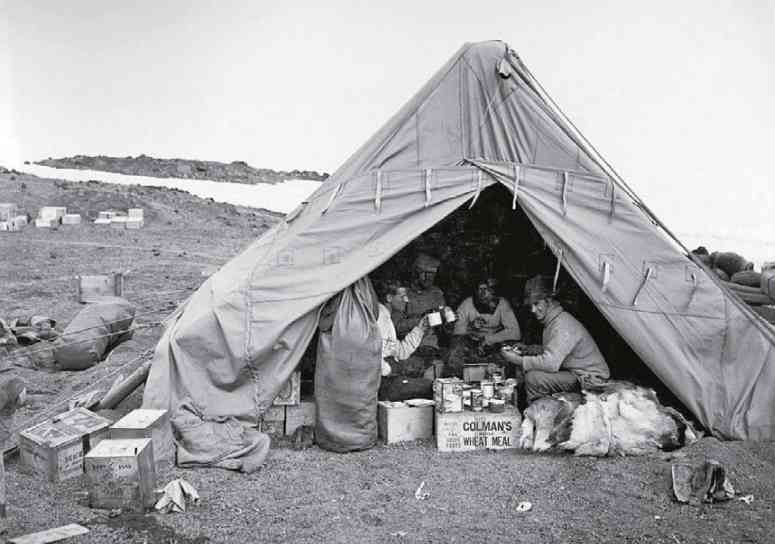
Most importantly, Amundsen was determined to do whatever it took to win. On April 9, 1910, in the twilight, Amundsen’s expedition team set sail from Oslo, the capital of Norway, on the "Forward". He claimed that the goal was the North Pole, but in fact he went all the way south. On January 14 of the following year, Amundsen landed in Walvis Bay and established a base there for the winter. His expedition team rarely conducted scientific research. Because Amundsen never concealed that the purpose of this trip was to reach the pole and nothing else. He also knew that as long as there was a slight shortage of transportation or food, it would cause irreparable catastrophic consequences. In March of this year, Amundsen divided a ton and a half of food into three portions and stored them at 80°, 81°, and 82° south latitude. He also realized that the pony had a fatal weakness: when rations were insufficient, the fodder fed to the horses could not be eaten by humans. So Amundsen made a decision that was completely different from Scott’s. Instead of using horses, he brought 116 Greenland Snow Dogs (a kind of "Husky" dog). He simply could not understand the British explorer’s concerns about using sled dogs. On the contrary, as a realist, Amundsen was not only prepared to let these dogs serve him until the last moment of his life, but even decided to slaughter these dogs in batches along the way as food for the expedition members and the remaining Huskies (these dogs did not care about eating the meat of their own kind), which was undoubtedly an atrocity in Scott’s view.
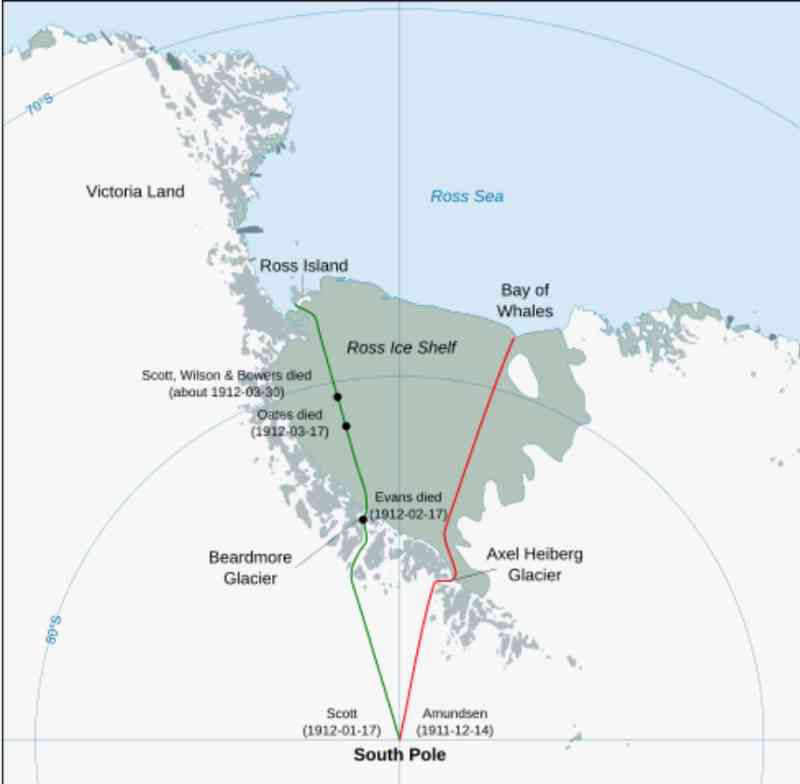
Conqueror of the South Pole
Anyway, on October 20, 1911, the competition began. Amundsen, Hansen (dog expert), Westin (whaling gunner), Hassel (customs officer), and Puolan (excellent skier) set out from the Whale Bay base camp. They selected 52 of the best sled dogs to pull four sleds, each pulled by 13 dogs. Amundsen was very lucky and the weather was very good. In this way, in just the first four days, Amundsen and his team advanced 160 kilometers to reach the supply point at 80° south latitude. This was not walking, but running! Amundsen replenished food here and had two days of leisure to rest.
On November 2, they had reached the last supply point at 82° south latitude. It was still 900 kilometers away from the South Pole. Starting from this last base, Amundsen and his team left some food every 100 kilometers, and piled up a small spire with snow blocks every 8 kilometers, and used it to orient themselves when returning. The daily walking mileage increased to 38 kilometers. They followed the usual rest days, with the men reading in their sleeping bags while the dogs ate and slept. Amundsen arranged the polar trip to be almost as relaxing as a guided tour of scenic spots.
At the same time, Amundsen was fully aware of the dangers of scurvy. Since the Age of Exploration, many explorers had suffered from scurvy, and even into the 20th century, sailors still had lingering fears when they mentioned the disease. The patient felt that his body was being eaten from the inside, his gums turned black and bloodless, and finally all his teeth protruded, his limbs swelled, and his joints were painful and unbearable. The patient’s skin turned blue and purple, ulcerated, and oozing blood. Scurvy attacked the most vulnerable parts of the human body, and new wounds appeared before the old ones healed. Although the real cause of the disease was not understood at the time to be a lack of vitamin C, it was generally known that the disease could be prevented by eating fresh meat. The Norwegians slaughtered extra Eskimo dogs along the way, and Amundsen ate the dog meat without vomiting or feeling any psychological pressure. He regarded the dog meat as fresh food and a good food to prevent scurvy. According to him, the dog meat tasted like good beef.
On November 19, Amundsen and his party had reached the top of the Hassan VII Plateau (3,340 meters above sea level) at 85°36’ south latitude and camped. According to the original plan, another 24 dogs were killed, leaving only 18 dogs. Puolan, who was on duty that day, called this base a "slaughterhouse". He buried the bodies of these dogs (the low temperature in Antarctica is a natural "refrigerator") and prepared to eat them on the way back.
Despite the blizzard, on December 7, 1911, Amundsen broke through the southernmost point that Shackleton had visited before (88°23’ south latitude). Unless they encountered an unexpected disaster, no difficulty could stop them from reaching the South Pole - they brought sufficient rations of food and 18 sled dogs. To celebrate this historic moment, Amundsen and his four expedition members enjoyed a sumptuous roast dog meat dinner. Amundsen wrote in his diary that day: "Now, I really can’t describe the joy in our hearts... We are heading south, and every step forward adds infinite joy."
Of course, there are also troubles. Amundsen also wrote in his diary: "Our faces are broken in the blizzard, and a little breeze will make people feel extremely painful, like a sharp knife stabbing on the face." In fact, Amundsen’s left face is like a rotten meat pie, bleeding. In the extremely cold weather of minus 40-50 degrees Celsius in Antarctica, the exposed body is very easy to frostbite. The skin begins to turn yellow, then gradually turns purple, and swells and blisters. But the urgent desire to win the South Pole race has long overcome the frostbite, and Amundsen and his team launched the final sprint to the South Pole!
The critical moment has arrived. On December 14, 1911, the weather was clear, which is rare in Antarctica. After a long journey, Amundsen and his team finally completed the final push to the South Pole. The "bottom of the world" they saw was an icy wasteland attacked by a blizzard, with an altitude of 3,360 meters. In his diary on that day, Amundsen wrote: "The first thing we did was to plant the Norwegian flag. At night, we sang and jumped in the tent, and the singing and laughter were all over. We were not in a hurry to open the bottle of wine to drink, but wrote the date of arrival at the South Pole on the bottle. We also wrote a letter to the King (of Norway) to tell him that we had finally reached our destination, the South Pole, after a difficult journey." Funny thing is that Amundsen later publicly declared: "I have never met a person like me who has gone against his wishes. I have dreamed of going to the North Pole since I was a child, but now I have reached the South Pole." Of course, compared with "the biggest mistake in my life is to start Alibaba", this is nothing...
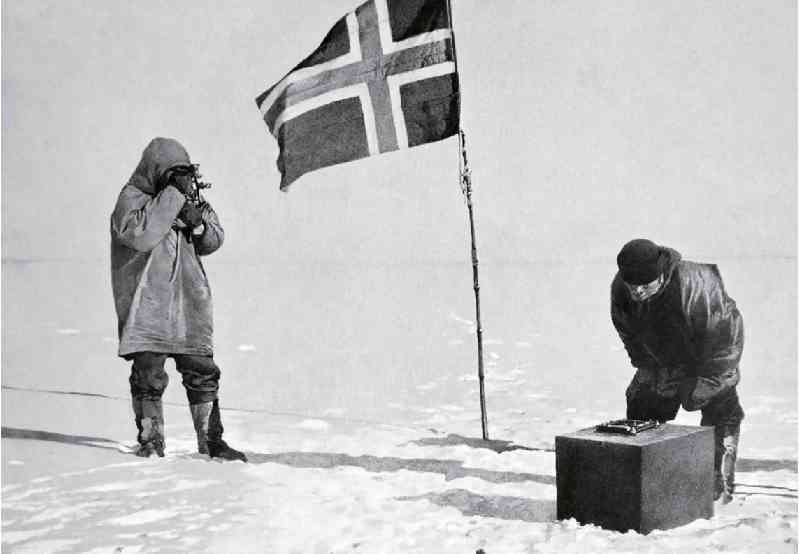
Only after reaching the South Pole did the Amundsen expedition team truly engage in a scientific expedition mission: after observing the movement of the sun for 24 hours, they determined the middle position of the South Pole and built a conical snow pile here, with a sled on top as a mark. When they set out on their return journey from the South Pole on December 18, Amundsen did not forget to leave a provocative message to his rival Scott - "Dear Captain Scott, you will be the first person to come here after us.
As if blessed by fate, Amundsen’s return journey was also smooth. On January 25, 1912, the victorious team returned to the camp in Walvis Bay intact, and the round trip took a total of 97 days. At this time, there were only 11 Eskimo dogs left with them. In return, Amundsen was determined to bring these "hard-working" "Antarctic old dogs" back to Norway, so that these dogs could live the most luxurious life in their later years ( He did it).
Die like a gentleman
While Amundsen was enjoying his victory in the camp at Walvis Bay, Scott and his expedition team were suffering on the ice field of Antarctica.
In this race, the British fell behind from the beginning. Scott set out for the South Pole 10 days after Amundsen had set out (November 1, 1911). This was a team of 20 people, with a sled pulled by 10 dwarf horses walking in the front with their heads held high, and two teams of 22 dogs pulling the sleds, following closely with their heads down. After a full month of trekking, Scott’s expedition team had completed 1/3 of the journey and reached the 82° South Latitude Line. But he didn’t know that Amundsen had crossed the 82° South Latitude Line 20 days ago. Now, Amundsen has reached the mountain plateau south of the 86° South Latitude Line. Scott has fallen behind Amundsen 450 kilometers.
Even more unfortunately, these Siberian ponies were completely exhausted from walking in the deep snow. Almost every day, a horse fell down and could not stand up again. Scott looked at these horses that he had placed great hopes on, and now he had to watch them being shot and fed to dogs. The Eskimo dogs became very happy after eating the horse meat. They dragged the heavy sleds desperately on the ice and snow. But they could not completely replace these Siberian ponies, and as a result, some of the extra sleds had to be pulled by people - the already weak physical strength had to be consumed in pulling the sleds - this was actually what Shackleton experienced that year, but it was beyond Scott’s expectations.
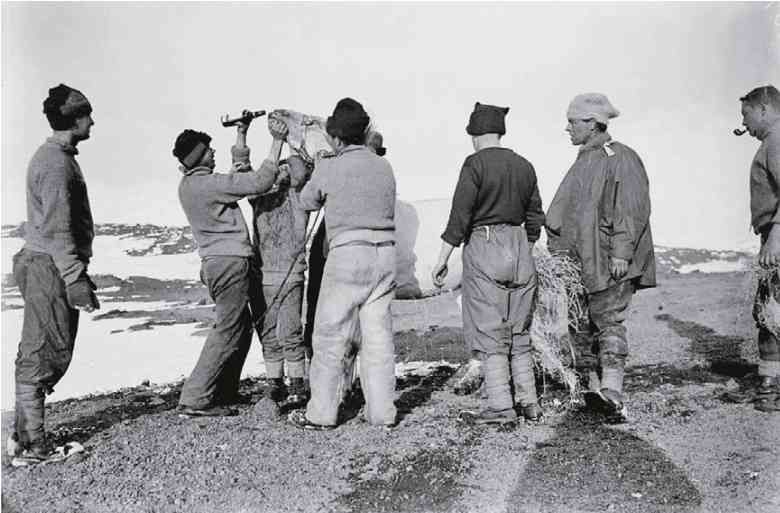
In December, like his opponent Amundsen, Scott’s expedition also encountered a blizzard. The pony could not move in such bad weather, so Scott had to rest. The temperature in the tent was not low at that time, reaching 1 degree Celsius above zero, but this made the ice and snow melt and made the tent wet. Scott wrote in his diary: "We slept in wet sleeping bags, with heavy hearts, stuffy in the tent, and distressed. I call these places "Sad Valley."
The blizzard lasted until December 9. The British were finally able to hit the road again, and the eight people headed towards the South Pole. At this time, the remaining ponies were no longer useful. They had no food and no strength to pull the sled, so Scott ordered all the horses to be killed. However, Scott’s sense of morality made it impossible for him to be cruel like Amundsen, who used dogs to eat dogs, so he simply sent the remaining expedition members to drive the dogs to pull the sled back to the base camp. The rest of the journey could only be done by manpower to pull the sled.
The real difficult journey began.
Scott and his eight people were divided into two groups, with four people pulling a sled, each with a rope tied around his waist, and each person wearing a pair of skis and holding a ski pole in each hand to move on the snowfield. This was a very difficult task, just like As Scott recorded in his diary on December 12: "During the march, we repeatedly fell into deep snow. Every step consumed a lot of physical strength and made us exhausted. The sled we dragged was really heavy, like a big stone." On December 14, the day when Amundsen had already reached the South Pole, Scott, who was unaware of the situation, still complained in his diary, "We marched in deep snow, were too tired, and could not move. My lips were already frozen and cracked, and there were bursts of pain.
On January 4 of the following year, Scott, who arrived at 87°32’ south latitude, selected four team members again. , launching the final sprint towards the South Pole. This was a mistake. All the work of his expedition team was originally arranged to adapt to the organization of 4 people in a team: the sled was pulled by 4 people, the tent slept 4 people, and the ration of food was packaged according to the weekly consumption of 4 people... Now "cooking for 5 people takes half an hour more per day than cooking for 4 people... This is something I didn’t consider in advance." This is because the cooker is designed for 4 people. When it is used for 5 people, it has to be done in two times.
When this exhausted expedition team finally arrived at the coveted South Pole on January 17, 1912 after a long journey of two and a half months, what appeared before them was the Norwegian flag flying high there and the footprints of Amundsen and others deeply imprinted on the snow. As Scott wrote in his diary, the dreams of these British people were shattered and their will collapsed: "Everyone’s mood is heavy, because the South Pole has been traced by human footprints. It is no longer the end, but the starting point of a new expedition. Our bodies were already badly damaged. We had to sleep in damp sleeping bags at night and walk with the remaining food during the day. Facing this situation, everyone felt how far the return journey was.
But they could no longer complete the return journey. Two expedition members died one after another due to extreme fatigue and unbearable cold. On March 19, Scott and three others arrived at the nearest supply point, which was only 18 kilometers away from them, but the blizzard was so fierce that it seemed to take their lives, making it impossible for them to leave the tent. Every night they hoped to reach their destination the next day, but on the second day, in addition to eating a day’s rations, they could only pin their hopes on the next day. Their fuel had run out, and the thermometer indicated minus 40 degrees Celsius. Their situation was like the last days of a death row prisoner waiting to be executed, but unlike the death row prisoner, they still had a glimmer of hope that the weather would improve.
In the tent, the 43-year-old Scott wrote 12 heartfelt letters. These letters were written to his family, colleagues and friends, and there were many words of comfort to his companions’ families. To the sponsor of the expedition, he wrote: "We have reached the South Pole, and we will die like gentlemen." The diary of this Royal Navy officer last stopped on March 29, 1912, and the last sentence was "For God’s sake, please take care of my relatives."

Eight months later, a search team found the remains of Scott and others, as well as the 35 kilograms of geological specimens they collected in Antarctica. Imagine if they had ignored everything else like Amundsen, abandoning these important scientific expeditions might have saved them. It is also for this reason that this tragedy also detracted from Amundsen’s victory. Compared with the heroic deeds of Scott and others, the Norwegians are often ridiculed. The proud British could not forgive the Norwegians for getting to the South Pole before them, and being pulled there by dogs. At the Royal Geographical Society’s celebration banquet for Amundsen, the host proposed a toast, but not to Amundsen, but to his sled dogs... It was ridiculous.
Conquest after conquest
In 1975, American scientists established a scientific station at the South Pole. They named it Amundsen-Scott Station, which not only commemorated the bravery and achievements of polar explorers, but also showed the general view that there would be no losers in this race to the South Pole!
There is another person who should not be forgotten, he is Shackleton. Although this man’s first trip to Antarctica failed, he became famous in Europe and was knighted. In his opinion, whether it was Amundsen or Scott, conquering the South Pole was only half of the journey. What the real conqueror of Antarctica had to do was to cross the entire Antarctic continent! In 1914, even though Europe was already in a crazy world war, he still raised enough funds from the British government, the Royal Geographical Society and some private groups, and started a more ambitious southern expedition, planning to travel 3,300 kilometers from the Weddell Sea through the South Pole to the Ross Sea. Shackleton planned to complete this unprecedented feat in 120 days. He divided the team into two groups, one group boarded the Ross Ice Shelf from the Ross Sea, and placed supplies at a designated location for the crossing group. He led another group to try to land from the Weddell Sea.
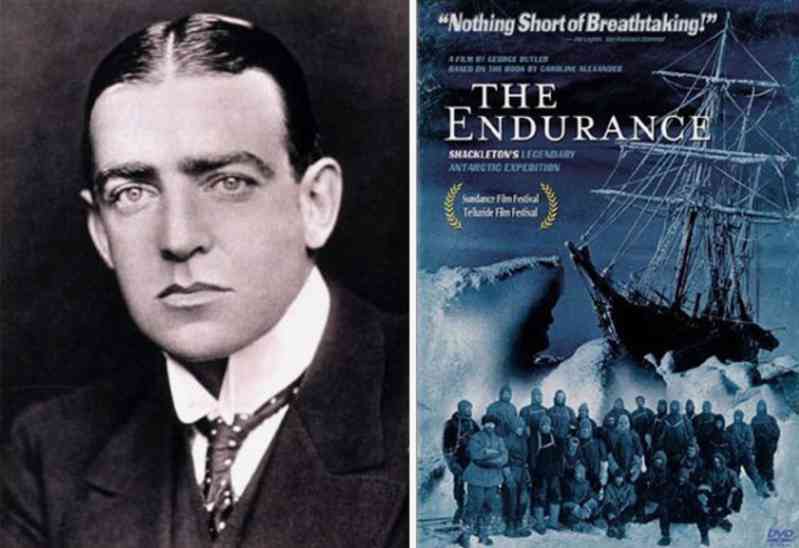
Under the conditions at that time, it was too difficult to complete such a grand goal and task, so some people called this action a foolish adventure. This was indeed the case. On January 12, 1915, the expedition team had just arrived in the Weddell Sea when the ship was frozen. The floating ice held the hull and drifted northwest. It was squeezed and broken and sank on October 27, 1915. All the team members drifted aimlessly on the ice for more than one year and three months, and climbed onto Elephant Seal Island in April 1916. They left the land on December 5, 1914, and drifted on the sea for more than 500 days in total.

There was almost nothing to eat on the island except elephant seals (hence the name of the island) and penguins, and the snow was still falling. The island was very remote and the rescue ship would definitely not come here. Shackleton made another decision. He wanted to explore the way. Shackleton and his five companions bravely fought against the strong wind and huge waves among the numerous icebergs in an open lifeboat of only 7 meters. The six people changed shifts every 4 hours, taking turns to steer, row and rest. After 14 days of hard work and sailing for more than 1,300 kilometers, they finally arrived at South Georgia Island on May 19. Under extremely difficult conditions, they climbed over three mountains before finding the Norwegian whaling base. The question Shackleton asked the first person he met was "When did the (First World War) end?" The answer he got was "The war is still going on, the death toll has exceeded one million, Europe has gone crazy, the world has gone crazy..."
Just like his plan to conquer the South Pole, Shackleton’s ambitious plan to cross the Antarctic did not succeed. In fact, it was not until 1958 that someone successfully crossed the South Pole. But Shackleton’s other wish-bringing every expedition member back safely was finally realized after overcoming various difficulties. For this reason, he proudly wrote in a letter: "No one is missing. We have crawled out of hell."
Geologist Priestley once spent the winter with Scott and Shackleton respectively, and later met Amundsen. In 1956, Priestley recalled with emotion that if the advantages of these three explorers could be combined, a perfect polar hero could be created: "If you want the leader of a scientific expedition, please give me Scott; if you want a fast and efficient polar expedition, I want Amundsen; but if you are in adversity, kneel down and beg God to give you Shackleton." This is the final verdict on these Antarctic exploration heroes.


